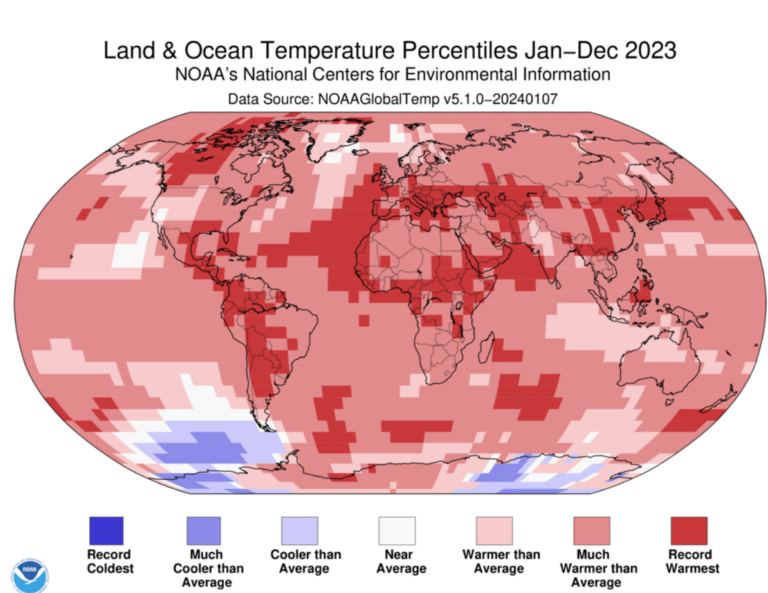Global temperatures in 2023 smashed records by a wide margin, surprising climate scientists and highlighting the need for more research.
The year 2023 was the warmest on record, according to analyses of global temperatures from NASA and NOAA. Scientists aren’t sure why temperatures were so anomalous.
“We’re frankly astonished,” said Gavin Schmidt, an author on NASA’s temperature analysis and a climate scientist at NASA’s Goddard Institute for Space Studies, at a press conference.
NASA’s and NOAA’s analyses, as well as a report from climate research nonprofit Berkeley Earth, all released Friday, concur that 2023 was a scorcher. NASA and NOAA scientists found that average temperatures were 0.15°C–0.16°C (0.27°F–0.29°F) warmer than temperatures in 2016, the previous hottest year ever recorded.
The expectation we had about how ENSO affects the global temperature…was totally reversed [last] year…
Gavin Schmidt
That’s a huge jump, because most records are set on the order of hundredths of degrees Celsius, said Russell Vose, a climate scientist at NOAA and an author on the agency’s analysis, at a press conference.
Berkeley Earth’s report concluded that 2023 was the first year to breach the 1.5°C (2.7°F) warming limit set by the Paris Agreement, a legally binding international treaty on climate change. NOAA’s and NASA’s analyses did not find that 2023 breached the 1.5°C limit, but “things are starting to approach that threshold,” Vose said at a press conference.
The European Union’s Copernicus Climate Change Service reported similar results Tuesday. Analyses from Berkeley Earth, NOAA, NASA, and the Copernicus Climate Change Service generally agreed, Vose said at a press conference.
“We’re still continuing to put greenhouse gases into the atmosphere,” Schmidt said. “As long as we continue to do that, temperatures will rise.”
The Berkeley Earth report suggested that the record-breaking temperatures in 2023 were driven by an El Niño event, in which the Pacific Ocean warmed and trade winds weakened.
The state of the La Niña–El Niño cycle, also called the El Niño–Southern Oscillation, or ENSO, in the spring is usually the best predictor of the year’s temperatures, Schmidt said at a press conference. In February and March of 2023, the world was still in the La Niña phase, leading scientists to think the rest of the year would be relatively cool.
“The expectation we had about how ENSO affects the global temperature…was totally reversed [last] year,” Schmidt said at a press conference.
El Niño alone is also not enough to explain […]
Full article: mavensnotebook.com

